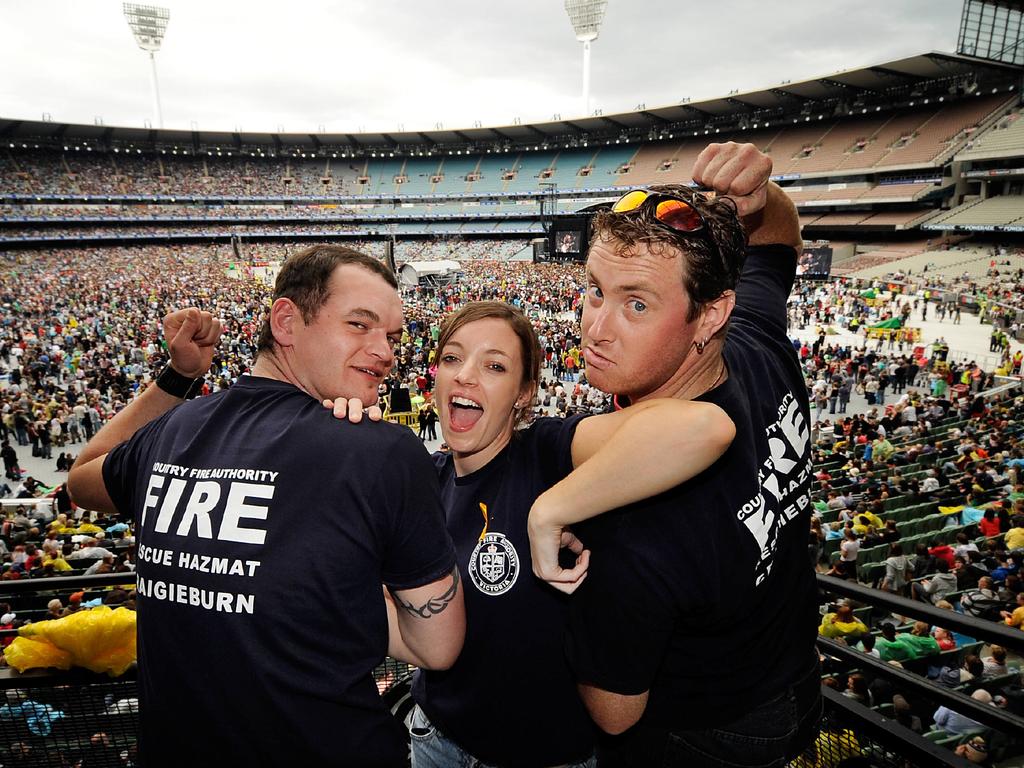Bushfire crisis: sorting through the burning issues


The Melbourne-based Australasian Fire and Emergency Services Authorities Council (AFAC) is the co-ordinating body for the local fire authorities responsible for diverting resources to where they are needed.
Last year the national firefighting bill came to $5.5bn. This year it will be significantly higher and we are yet to come to peak season for much of the country, with Victoria, South Australia, Tasmania and Western Australia traditionally peaking in February.
That explains in part why no one at AFAC headquarters is counting the money quite yet and, certainly in the middle of a catastrophic season, no one is celebrating.
Canberra has swung into action, spurred it would seem by the Scott Morrison’s embarrassment at being on an offshore holiday as the fires burned out of control.

The Prime Minister’s belated focus on fixing the damage is clearly welcome even as it highlights the co-ordination effort needed now and next time.
His mooted royal commission has met mixed reactions, with the conclusion that the person who needs it most is Morrison as part of his recovery plan.
An optimist would say a full-blown inquiry may also be the best route to genuine reform, but on the issue of climate change the naysayers in the Coalition party room have already staked out their opposition and the realists in business noted a full-blown carbon tax would not have prevented the New Year carnage.

The climate change issue is, of course, impossible to divorce from this season’s crisis, taken from the wider perspective of the drought and overall impact on the environment.
The damage to wildlife and vegetation tragically compounds the problems that have emerged.
The more immediate focus is what has been learned, how to meet the immediate challenges — which spread from infrastructure failures to long-term individual psychological damage — and how to handle it better in the future.
AFAC boss Stuart Ellis spoke for many in business when the former army officer said: “We certainly need an inquiry to learn what happened and what could be done better, but royal commissions can be more about blaming than learning.”
His point is valid.
But of course, Ellis and his 31 fire and emergency services around the country are in the centre of the action and might be expected to want attention diverted more to the future than what might have happened last time.
There have been 57 inquiries in the past 62 years and just maybe governments should be making decisions on the recommendations rather than chasing down other inquiries.
“There is a huge risk of duplicate effort in issues like land use planning and fuel reduction,” Ellis said.
As noted earlier this week, the catastrophic fires have prompted the expected calls for more and better resources and indeed the creation of an industry around fire management, given it is a reality for Australia. Those in the game shake their head at the suggestion, noting there already is an industry in Australia when you consider there are 80 small planes and 140 helicopters.
This group has an association, known as the Aerial Application Association of Australia, which covers the fact the planes are no longer the old fashioned crop dusters but do different things including contracting for firefighting. The planes cost about $2m each, and $4m if they have floats to enable landing on water.
The large aircraft, like the one acquired by NSW from Canadian supplier Coulson, costs $150m to buy and $3m a year to rent. Coulson maintains the NSW plane, which is based at the Richmond air base.
Proponents such as former Victorian emergency chief Craig Lapsley want Victoria and Queensland to also own a plane.
Lapsley has done some work for Coulson in the past.
In Australia, the big planes drop the retardant around the edge of fires.
Both big and small operators agree the best use of aircraft is when the fire is small, which means they are of less use in the monster fires of recent weeks.
AFAC’s Ellis said his organisation had a formal contract with 150 different operators.
His organisation has seven on the ground in Australia, rented from offshore, five of which came in early, but it is still waiting for another four on order from offshore.
They are stuck offshore and may have been available earlier if the orders were placed before the Prime Minister’s call a couple of weeks ago.
There are 350 different smaller operators, of which about a quarter do fire work.
There are about 30,000 permanent ground crew and 250,000 volunteers to work on the fires.
This is about three times bigger than the Australian Defence Force.
Morrison’s use of reservists came as a surprise to those on the ground, and in any case they are best used to handle the post-fire logistics.
The Defence Force is doing a great job doing just that, now clearing roads and delivering supplies.
In the US, reservists are trained as firefighters, and this makes sense in Australia.
NSW has the only large aircraft on the ground in Australia.
One of the key issues to emerge is national resourcing.

NSW has about 3800 fire trucks and 2000 support vehicles and the trick is to manage extra vehicles with staff.
That is AFAC’s task.
So-called prescribed burning to reduce the fuel load is another big issue this time around, which is clearly a state issue through the different parks and wildlife offices.
Traditionally this happens in spring, but in NSW the fire season had already started and earlier burning was considered risky because of the drought.
As Ellis says, the fire crews are considered heroes when they save property and lives, but if they start an uncontrolled fire they are demons.
There are also big issues around federal government intervention because local authorities don’t want Canberra telling them what to do, because arguably the Feds don’t understand the climate and other local issues.
The states do want extra funds and better co-ordinated national resourcing.
Australia is destined to have more fires and, with international help, is trying to cope.
Australia is well known for helping in the US and Canada but over the years has also provided services in France, Spain and Indonesia, among other countries.
The creation of a new industry, then, is more a question of the right niches, because the reality is one exists already — not a big international earner but one that has provided plenty of international support.
The more immediate focus is, of course, on handling this season’s tragedies and preparing for next month’s peak in the southern states.
The trick then is to convert the present political concern into genuine long-term commitments to support the industry going forward. And with the right planning, maybe those niches will emerge.







Somewhat perversely there has never been a better time to be a fire emergency manager than right now, with potential political support at a peak, but the trick is to maintain that interest.